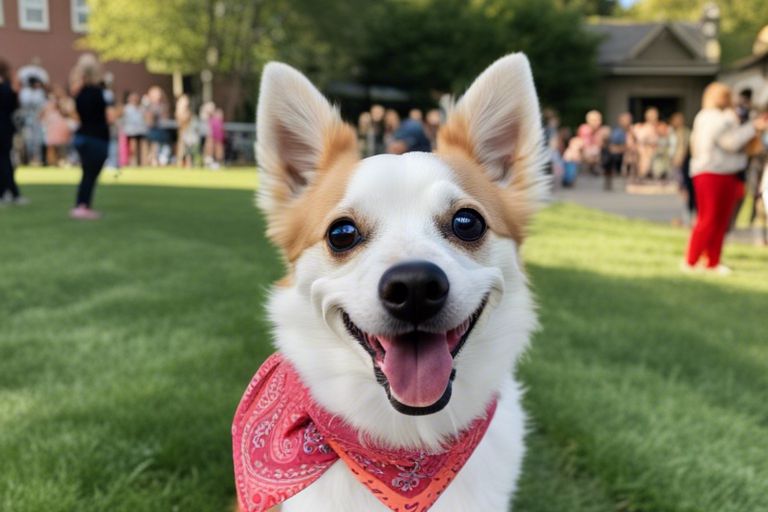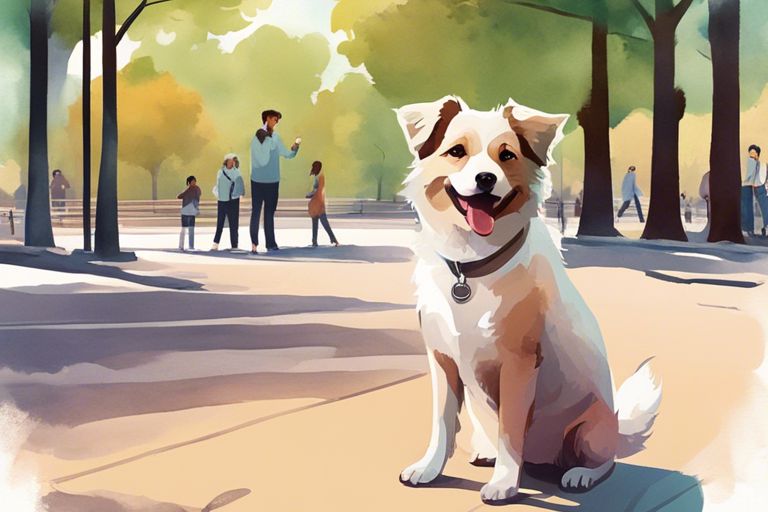Experiencing separation anxiety can be distressing for both you and your small dog. However, there are several strategies that I have found to be effective in helping to alleviate this issue. One of the most important things to remember when addressing separation anxiety in small dogs is to avoid reinforcing negative behaviors by being overly comforting. Instead, I have found that creating a consistent routine and providing engaging distractions can help to ease your dog’s anxiety when you are away. It’s essential to remember that addressing separation anxiety is a gradual process that requires patience, consistency, and understanding of your dog’s individual needs.
Key Takeaways:
- Understanding the root cause: Recognizing the signs of separation anxiety in small dogs and identifying the triggers is essential in addressing the issue effectively.
- Gradual desensitization: Introducing the small dog to short periods of alone time and gradually increasing the duration can help reduce separation anxiety through desensitization.
- Seeking professional help: Consultation with a veterinarian or a certified dog behaviorist can provide valuable insights and guidance on managing and addressing separation anxiety in small dogs.

Identifying the Signs of Separation Anxiety
If you suspect your small dog is suffering from separation anxiety, it’s important to be able to recognize the signs. Treating Separation Anxiety in Dogs is most effective when started early, so the sooner you can identify the issue, the better. Here are some key indicators to look out for.
Behavioral Indicators
One of the most common behavioral indicators of separation anxiety in dogs is excessive barking, whining, or howling when left alone. They may also exhibit destructive behavior, such as chewing on furniture or door frames, attempting to escape by scratching at doors or windows, or having accidents inside the house even if they are house trained. Some dogs may also pace or display restlessness when they know you are preparing to leave, or become overly clingy and follow you around the house.
Physical Symptoms
In addition to behavioral signs, separation anxiety can also manifest in physical symptoms. If your small dog is suffering from this condition, they may pant excessively, drool, or tremble when left alone. Some dogs may even experience vomiting or diarrhea as a result of the stress and anxiety caused by separation from their owner. These physical symptoms can be distressing for both you and your pet, and it’s important to address the issue as soon as possible to prevent any long-term negative effects on their health.
Strategies for Alleviating Anxiety
While dealing with separation anxiety in my small dog, I have found several strategies that have been effective in helping alleviate the symptoms and making my pet feel more comfortable when I am away. These strategies include training techniques and environmental modifications that can help reduce stress and anxiety for your small dog. Utilizing a combination of these strategies can make a significant impact on your pet’s well-being when left alone.
Training Techniques
When it comes to training techniques for alleviating separation anxiety in small dogs, consistency is key. Start by practicing short absences, gradually increasing the time you are away. Positive reinforcement is essential – praise and reward your dog when they remain calm during your absence. This helps them associate your leaving with positive experiences. Desensitization to departure cues, such as picking up keys or putting on shoes, can also be effective. Lastly, seek professional help if needed, as a certified dog trainer can provide personalized guidance for your specific situation.
Environmental Modifications
In addition to training techniques, making environmental modifications in your home can help ease separation anxiety for your small dog. Creating a safe space, such as a cozy den or crate, can provide comfort and security. Interactive toys and puzzles can keep your dog mentally stimulated and distracted while you are away. Implementing calming aids, such as pheromone diffusers or calming music, can also help create a relaxing environment for your pet. Be sure to gradually introduce these changes to avoid overwhelming your dog.
Professional Interventions
Your small dog’s separation anxiety may be serious enough to warrant professional interventions. There are several options available to help your furry friend cope with their anxiety, and seeking the help of a qualified professional can make a significant difference.
When to Seek Help from a Veterinarian
If your dog’s separation anxiety is severe and is having a significant impact on their quality of life, it’s important to seek help from a veterinarian. Separation anxiety can be distressing for both the dog and the owner, and it’s essential to address the issue as soon as possible to prevent it from escalating. A veterinarian can conduct a thorough examination to rule out any underlying health issues causing or exacerbating the anxiety. In some cases, the vet may prescribe medication to help manage your dog’s anxiety while other interventions are put in place.
Role of Animal Behaviorists
Animal behaviorists are professionals who specialize in understanding and modifying animal behavior. They can play a crucial role in helping your small dog overcome separation anxiety. Behaviorists can provide valuable insights into the root causes of your dog’s anxiety and develop a tailored behavior modification plan to address it. They can also offer guidance on creating a safe and comfortable environment for your dog, as well as teach you techniques for gradually desensitizing your dog to your departures. Working with an animal behaviorist can significantly improve your dog’s ability to cope with being left alone.
Daily Routines and Maintenance
Now that we have established that your small dog has separation anxiety, it’s important to focus on creating a daily routine that can help alleviate their stress and fear when you’re not around. Consistency is key when it comes to helping your pet feel secure and less anxious. By establishing a calming routine and incorporating plenty of exercise and playtime, you can help your small dog feel more relaxed and confident when you’re not at home.
Establishing a Calming Routine
Creating a calming routine for your small dog can help reduce their anxiety when you’re not around. This routine should include specific activities that signal to your pet that you’ll be leaving soon, but also that you’ll be returning. For example, before you leave, ensure that you spend some quality time with your dog, whether it’s a short walk or some playtime. It’s important to establish a predictable routine around your departures and arrivals to help ease your pet’s anxiety.
The Role of Exercise and Playtime
Exercise and playtime are essential for helping your small dog manage separation anxiety. Regular physical activity not only helps to keep your pet healthy but also releases endorphins that can help reduce stress and anxiety. Make sure to provide your small dog with plenty of opportunities to play and interact with you before you leave. This can include engaging games, chew toys, or puzzle feeders. Additionally, incorporating daily walks into your routine can provide mental stimulation and physical exercise, which can help alleviate anxiety in your small dog. Regular exercise and playtime can be effective in reducing separation anxiety and promoting overall well-being in your small dog.
Conclusion
Following this guide, you can help your small dog with separation anxiety by implementing a consistent routine, using positive reinforcement training, and gradually desensitizing them to your departures. It is important to remain calm and patient throughout the process and seek professional help if necessary. Remember, your small dog relies on you for comfort and security, so be sure to provide them with the love and support they need during this challenging time. With dedication and understanding, you can help your furry friend overcome their separation anxiety and live a happier, more secure life.
FAQ
Q: What are the signs of separation anxiety in small dogs?
A: Signs of separation anxiety in small dogs may include excessive barking or whining, destructive behavior, urinating or defecating indoors, and incessant pacing. These behaviors occur when the dog is left alone and are indicative of distress.
Q: How can I help my small dog with separation anxiety?
A: To help a small dog with separation anxiety, you can start by gradually desensitizing them to your departure. Practice leaving for short periods of time and gradually increase the duration. Additionally, make your departures low-key and avoid making a big fuss when leaving or returning. Provide engaging toys, such as food puzzles, to keep your dog occupied while you are away. Sometimes, professional help from a veterinarian or dog behaviorist may be necessary.
Q: Are there any training techniques to help alleviate separation anxiety in small dogs?
A: One effective training technique is to create a safe and comfortable space for your small dog to retreat to when you are away. This could be a crate or a designated area with their favorite toys and bedding. Gradually introduce your dog to this space while offering positive reinforcement. Additionally, engaging in regular exercise and mental stimulation can help reduce anxiety. Consistency and patience are key when using training techniques to address separation anxiety.

